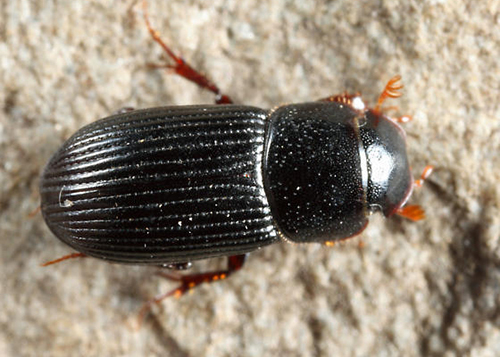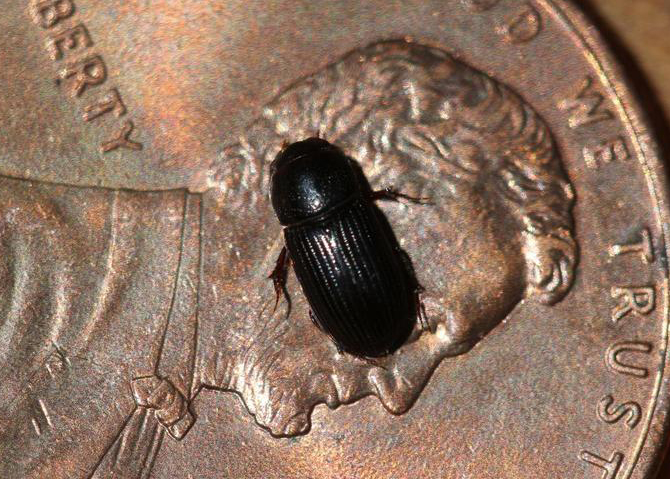Integrated Pest Management
Black Turfgrass Ataenius
Ataenius spp.
Pest Description
- adults: small (3/16 inch long), black, shiny beetles
- larvae: tiny, c-shaped grubs; cream colored with a grayish rear end and
- brown head capsule; six thoracic legs
- larvae are tiny compared to other white grub species, about 1/4 inch long when mature
Host Plants, Diet & Damage
- larvae feed on roots of turfgrasses including Kentucky bluegrass, annual bluegrass and bentgrass
- larval feeding leads to wilting and localized dry spots
- extensive damage is similar in appearance to larger white grub feeding
Biology, Life Cycle & Damaging Life Stage
- adults overwinter in the soil and under leaf/wood debris
- adults are active early spring and deposit eggs into thatch and soil in early-summer
- larvae actively feed early to mid-summer
- second generation adults emerge mid- to late-summer
- up to two generations per year
- larvae are the damaging stage
IPM Recommendations
- Maintain healthy plants with proper cultural practices.
- Monitor by sampling soil to search for larval stages.
- Apply a biopesticide that contains entomopathogenic nematodes or Beauveria fungal spores.
- Apply a preventive insecticide (anthranilic diamide; neonicotinoid).




